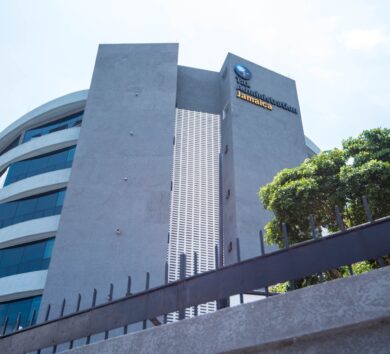

Durrant Pate/Contributor
The Planning Institute of Jamaica (PIOJ) is reporting that the Jamaican economy grew by an estimated 5.7 per cent in the April to June 2022 quarter, compared with the corresponding quarter of 2021.
The out-turn for the April to June 2022 quarter largely reflected the impact of the removal of measures implemented to manage the COVID-19 pandemic compared to the same time last year some of these measures were still in effect. Dr Wayne Henry, PIOJ director-general, reports that other factors contributed to the improved out-turn.
These factors included increases in hectares reaped, which facilitated growth in the agriculture industry and the continued improvement in the markets of Jamaica’s main trading partners. In addition, increased employment and consumer confidence was also a factor contributing to the economic growth experienced.
Addressing the PIOJ’s quarterly news briefing on the economy, Henry admitted that, “despite the overall improvement, further growth was stymied by plant downtime, particularly in the manufacturing and mining industries, partly due to aged equipment and other production-related disruptions.”
Real Sector developments
The ‘Goods-Producing Industry’ declined by an estimated 0.4 per cent with contractions in the ‘Mining & Quarrying and Construction’ industries. These declines outweighed the growth recorded for the ‘Agriculture and Manufacturing’ industries.
The agriculture industry grew by 12.6 per cent, which primarily reflected an increase in hectares reaped to meet the higher demand associated with continued recovery in the economy. Growth in the industry was driven by ‘Other Agricultural Crops’, which grew by 15.8 per cent, reflecting higher production in five of the nine crop groups.
Increases were recorded for yams, up 16.5 per cent; plantains (11.7 per cent); cereals (11.0 per cent); vegetables (10.3 per cent); and potatoes (4.8 per cent). ‘Traditional Export Crops’, grew by a margin of 7.4 per cent largely driven by higher production of bananas, up 3.5 per cent; cocoa (113.6 per cent); and sugar cane (1.8 per cent).
These increases outweighed an estimated contraction recorded for coffee, down 38.3 per cent.

Mining & Quarrying declined
‘Real Value Added for Mining & Quarrying’ decreased by 60.6 per cent, due to a decline in alumina production, which outweighed an increase in crude bauxite production. Total bauxite production declined by 42.6 per cent reflecting the combined effect of alumina production, down 76.8 per cent due to the continued closure of the JAMALCO refinery, which was negatively impacted by a fire in August 2021.
The alumina capacity utilization rate was 9.8 per cent, down 32.4 percentage points compared with the corresponding quarter of 2021. Crude bauxite production, however, increased by 8.8 per cent, as a result of an expansion in demand from third-party consumers.
Manufacturing grew 2.8%
The manufacturing industry was estimated to have grown by 2.8 per cent, due to the removal of COVID-19 management measures, which facilitated an increase in demand for some products. Higher output was estimated for both the ‘Food, Beverages & Tobacco’ and the ‘Other Manufacturing’ sub-industries.

In the ‘Other Manufacturing’ sub-industry, growth was supported by the performance of the ‘Chemicals & Chemical Products’ category with salt, up 8.2 per cent, and ‘Non-metallic Minerals’ with higher production of cement, up 6.4 per cent; and ‘Clinker’, up 8.2 per cent. The performance was tempered by an estimated downturn for ‘Petroleum Products’.
Major declines were recorded for liquid petroleum gas (LPG), down 100.0 per cent; turbo fuel, down 47.5 per cent; fuel oil, down 29.9 per cent; automotive diesel oil (ADO), down 38.4 per cent; and gasoline, down 42.1 per cent. These contractions resulted from the closure of the Petrojam refinery for 31 days to facilitate maintenance activities.
Construction
The ‘Construction’ industry contracted by 4.2 per cent, mainly reflecting an estimated downturn in activities in the ‘Other Construction’ component. ‘Total sales of Construction inputs’ contracted by 13.6 per cent in real terms.
The estimated contraction in the ‘Other Construction’ component was due to lower capital expenditure on civil engineering activities, reflecting the National Works Agency (NWA), which disbursed J$5.0 billion, down 29.2 per cent, due to lower expenditure associated with work on the Yallahs to Harbour View leg of the Southern Coastal Highway Improvement Project (SCHIP).

These declines offset the increased disbursement from Jamaica Public Service Company, which disbursed J$2.3 billion, representing an increase of 6.3 per cent and expenditure associated with construction and installation activities to facilitate the increased distribution and generation of power.
Services Industry developments
The ‘Services Industry’ was estimated to have grown by 7.7 per cent, reflecting higher real value added for all industries. The improved performance largely reflected the strength of the continued recovery, following the relatively low levels of output recorded in the corresponding quarter of 2021, whilst some of the restrictive COVID-19 measures were still in effect.
The ‘Electricity & Water Supply’ industry recorded an increase of 2.0 per cent in real value added, reflecting an expansion in electricity consumption. This increase was sufficient to mitigate the contraction recorded for water consumption. Electricity consumption increased by 2.7 per cent reflecting higher consumption for four of six consumer categories.
Water consumption declined by 0.7 per cent, reflecting declines in five of the 14 parishes. There was a 3.1 per cent decrease in the Eastern division, which accounted for 66.2 per cent of total consumption, outweighing an increase of 4.3 per cent in the Western division.
The ‘Transport, Storage & Communication’ industry grew by an estimated 10.0 per cent, due to increases in both the ‘Transport & Storage’ and ‘Communication’ components. An improved performance was recorded for the air transport subcomponent, largely reflecting an 82.5 per cent increase in passenger movements.







Comments